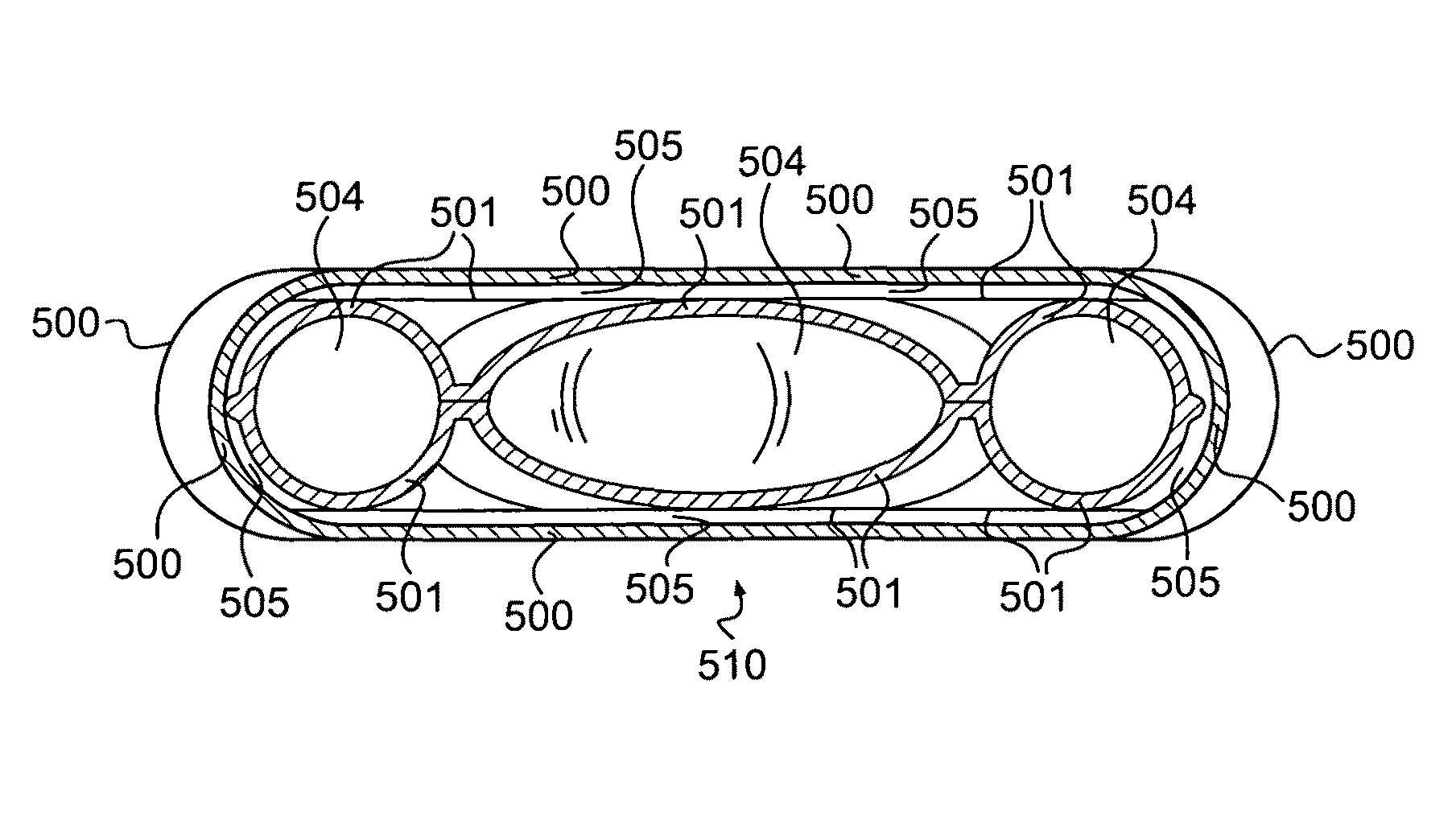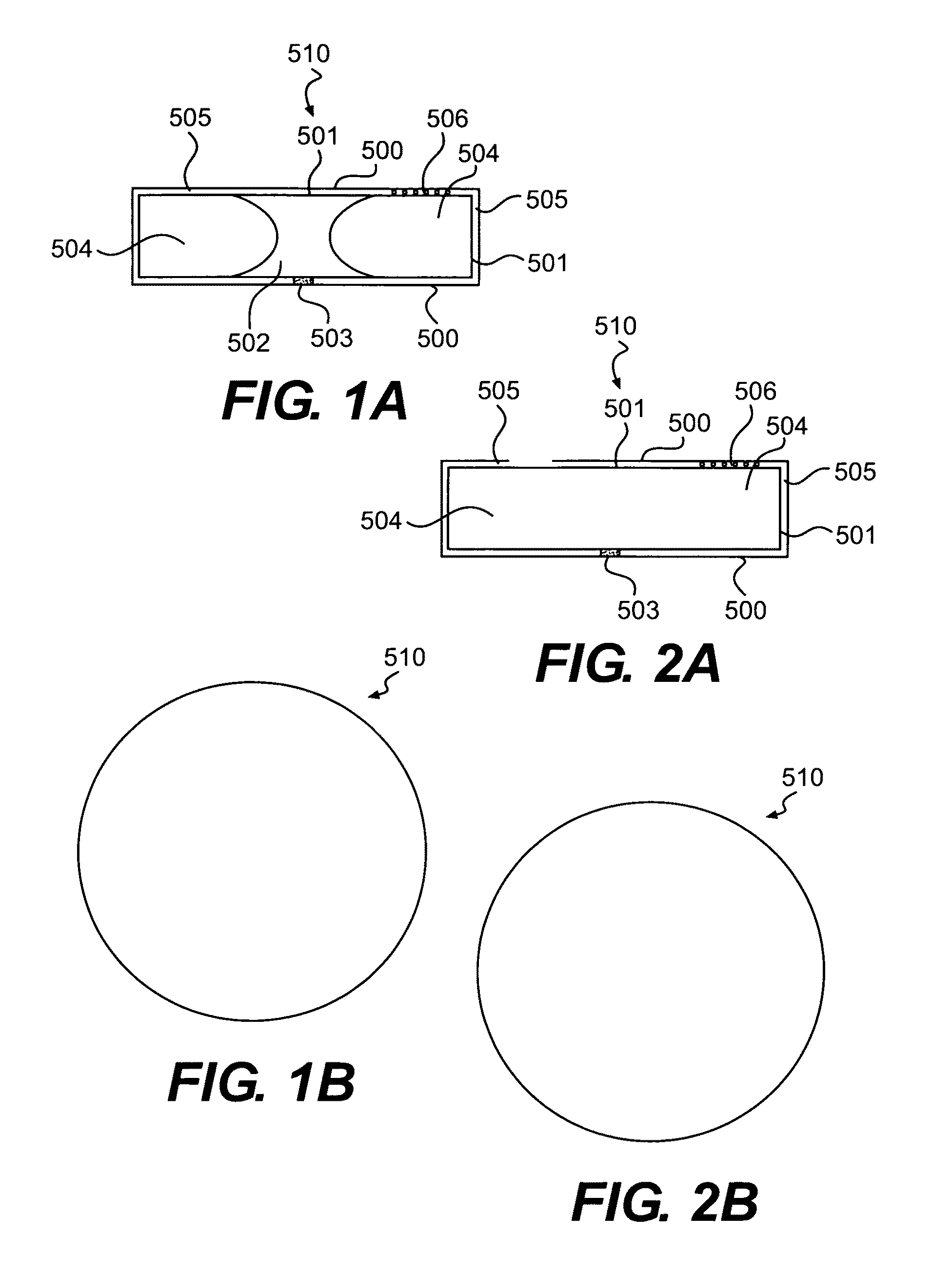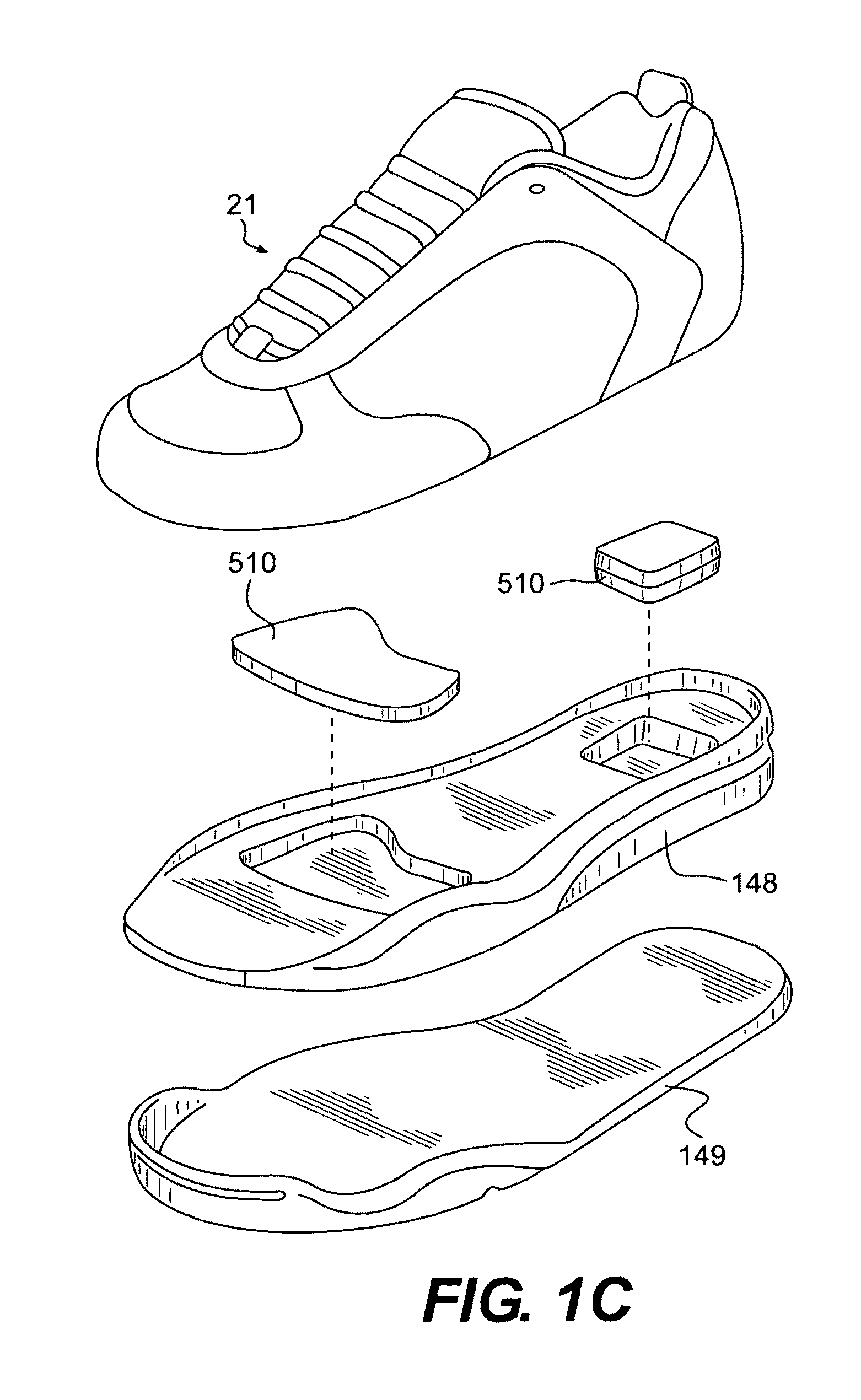Devices with faraday cages and internal flexibility sipes
a technology of internal flexibility and faraday cages, which is applied in the direction of electrical apparatus contruction details, electrical apparatus casings/cabinets/drawers, instruments, etc., can solve the problems of inability to overcome, no products were released, inherent flaws of semiconductor wafers, etc., and achieve the effect of reducing their rol
- Summary
- Abstract
- Description
- Claims
- Application Information
AI Technical Summary
Benefits of technology
Problems solved by technology
Method used
Image
Examples
Embodiment Construction
[0056]FIGS. 1-9 of this application are FIGS. 1-6, 52, 61, 67, 74, and 79 of both the applicant's U.S. application Ser. No. 11 / 802,033 filed May 18, 2007 and published on Apr. 10, 2008 as Pub. No. US 2008 / 0083140 A1 and PCT Application PCT / US2007 / 011976 filed 18 May 2007 and published on 31 Jan. 2008 as Int. Pub. No. WO 2008 / 013594 A2, as well as U.S. application Ser. No. 11 / 802,930 filed May 25, 2007 and published on Apr. 17, 2008 as Pub. No. US 2008 / 0086916 A1; all three applications are incorporated herein by reference. In addition, FIGS. 1-6 (except 6D-6F) of this application are FIGS. 83-88 of both the applicant's U.S. application Ser. No. 11 / 282,665 filed Nov. 21, 2005 and published on Nov. 9, 2006 as Pub. No. US 2006 / 0248749 A1 and PCT Application PCT / US2005 / 042341 filed 21 Nov. 2005 and published on 1 Jun. 2006 as Int. Pub. No. WO 2006 / 058013 A2, both of which are incorporated herein by reference.
[0057]FIGS. 1-9 show the applicant's prior inventions incorporating forms of in...
PUM
 Login to View More
Login to View More Abstract
Description
Claims
Application Information
 Login to View More
Login to View More - R&D
- Intellectual Property
- Life Sciences
- Materials
- Tech Scout
- Unparalleled Data Quality
- Higher Quality Content
- 60% Fewer Hallucinations
Browse by: Latest US Patents, China's latest patents, Technical Efficacy Thesaurus, Application Domain, Technology Topic, Popular Technical Reports.
© 2025 PatSnap. All rights reserved.Legal|Privacy policy|Modern Slavery Act Transparency Statement|Sitemap|About US| Contact US: help@patsnap.com



